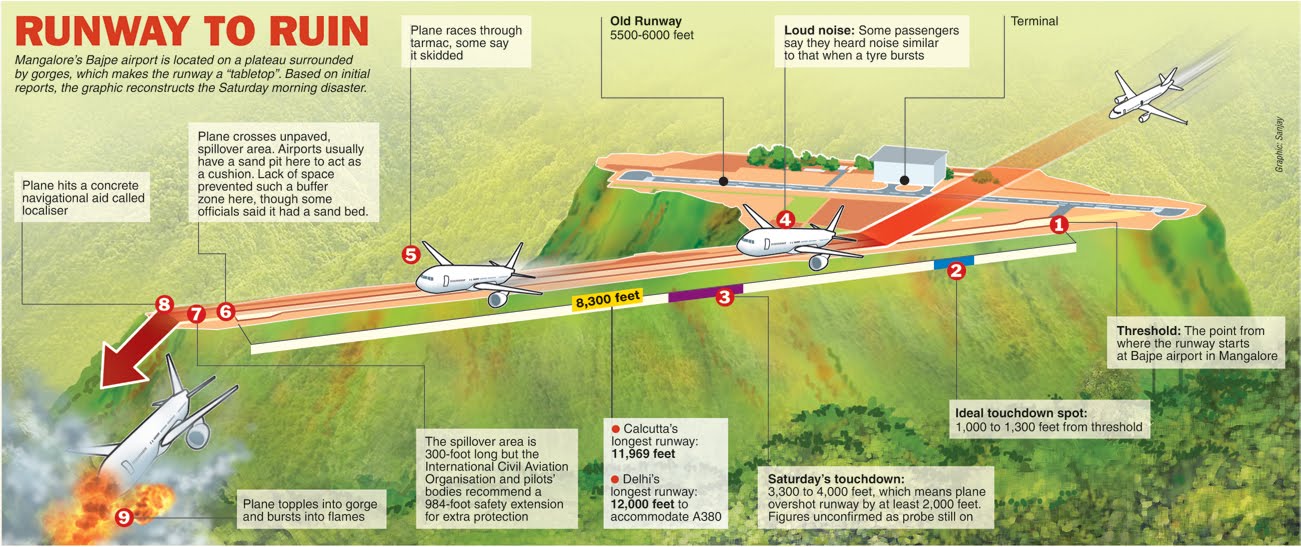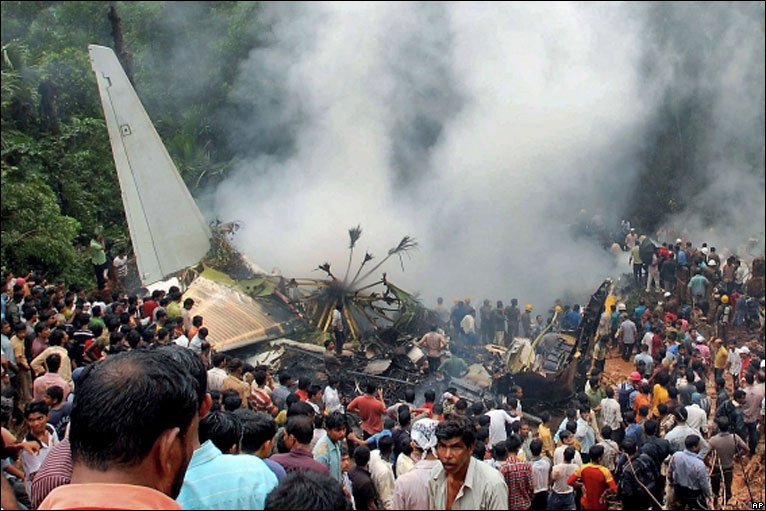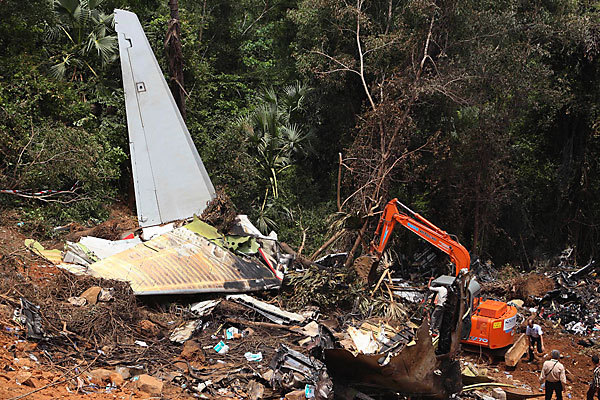Mangalore air crash: How it happened?
In one of the country’s worst aviation disaster, an Air India Express flight from Dubai to Mangalore crashed while landing at the Mangalore airport at 6:05 am on Saturday. A Boeing 737-800, the aircraft, with 166 people on board, overshot the runway and crashed into the valley before bursting into flames. The crash killed 158 people and left eight survivors.
The pilot-in-command, Z Glucia was an experienced pilot with 10,000 hours of flying experience and had 19 landings at the Mangalore airport. Co-pilot S S Ahluwalia with 3000 hours of flying experience had as many as 66 landings at this airport.
 According to sources, the pilots did not report any malfunction to the Airport Traffic Control (ATC), before landing at the Mangalore Airport. Here’s a look at the crash site at Bajpe, about 20 km from Mangalore and 350 km from the state capital Bangalore. The ‘table-top’ Mangalore airport is considered tricky for aircraft landings and take offs, particularly in the rainy season. The runway is on top of a hill and surrounded by deep gorges that are just 30 metres from the runway. There are tropical forests on the three sides of the mountain.
According to sources, the pilots did not report any malfunction to the Airport Traffic Control (ATC), before landing at the Mangalore Airport. Here’s a look at the crash site at Bajpe, about 20 km from Mangalore and 350 km from the state capital Bangalore. The ‘table-top’ Mangalore airport is considered tricky for aircraft landings and take offs, particularly in the rainy season. The runway is on top of a hill and surrounded by deep gorges that are just 30 metres from the runway. There are tropical forests on the three sides of the mountain.

Aviation experts say the airport leaves no room for error as it does not have an overshoot area, which means that if a pilot makes a mistake and lands too far down the runway, it could lead to a disaster.
Facts pieced together from information trickling in and pending an official inquiry tell us that the landing approach of the fateful aircraft, early on Saturday morning at the Mangalore airport, was reportedly normal and the pilot reported to ATC 10 miles from touchdown. The Air Traffic Control (ATC) saw the plane approaching and the entry to the runway was normal. There was a slight drizzle at the time, but the runway was not wet, and visibility was good.

The trouble began when the aircraft landed beyond touchdown zone and overshot the runway. It is a table top runway with a cliff just beyond. The pilot tried to stop by hard-braking, the tyres burst. Survivors report hearing a loud noise, possibly a tyre burst. The plane veered and hit the concrete base of an antenna at the edge of the runway. A wing broke. The plane moved towards the cliff, split on the edge and fell into the valley. Survivors were thrown out at the edge of the tarmac and some got stuck in overhead cables. The plane then burst into flames, killing 158 people on board.
With its 158 fatalities, the accident was the third deadliest aviation disaster in India, after the 1996 Charkhi Dadri mid-air collision, which killed 349, and the 1978 crash of Air India Flight 855, which killed 213. It marked the first major Indian aviation accident since the July 2000 crash of Alliance Air Flight 7412 in Patna.The accident is the deadliest crash of a 737 aircraft (all series) and the eighth hull loss of a Boeing 737-800 aircraft. The crash caused the highest number of aviation fatalities in 2010 and was the second of the year to involve a 737-800. It was the second time that an aircraft had overshot a runway at Mangalore.

Apart from the six crew members, a total of 160 passengers were on board at the time of the crash. Although there were 169 names on the original passenger list, nine did not board the flight. All the bodies were recovered from the wreckage. Karnataka Home Minister V. S. Acharya said eight people were initially reported to have survived, although one person died of his injuries—this was however refuted by an Air India spokesman who confirmed that all initial survivors were alive. This confusion arose after fire fighters rescued a little girl who died on the way to hospital.The airport manager at Mangalore, Peter Abraham confirmed that there were difficulties when trying to reach the plane.



















